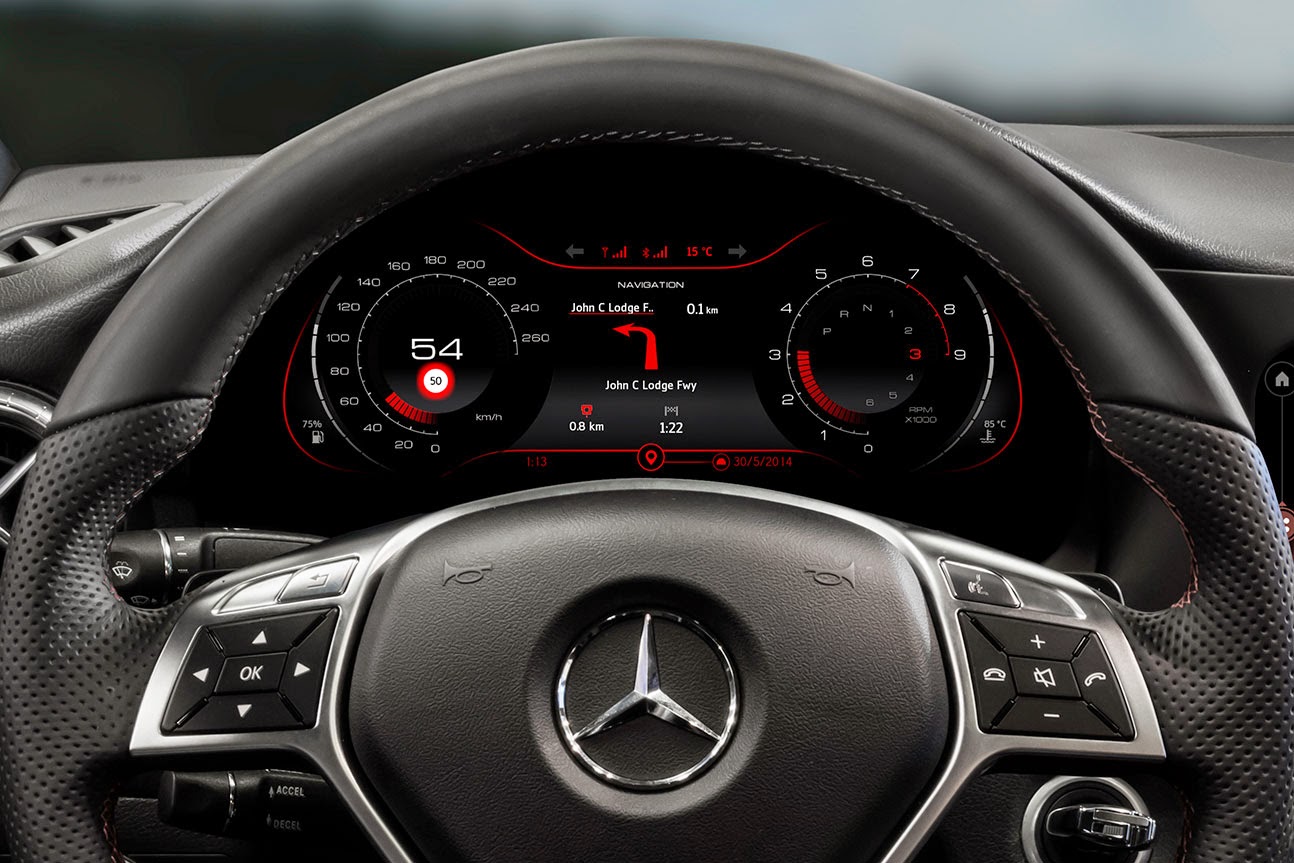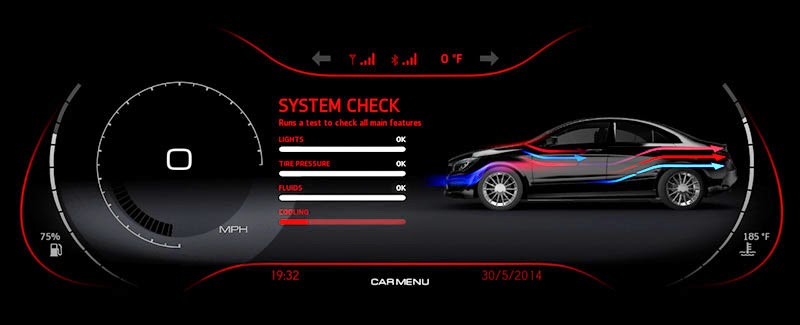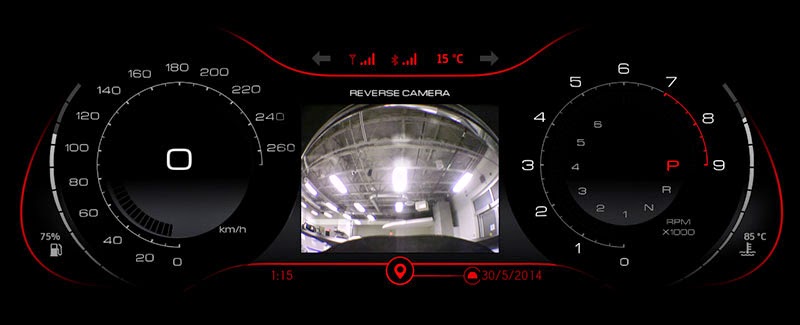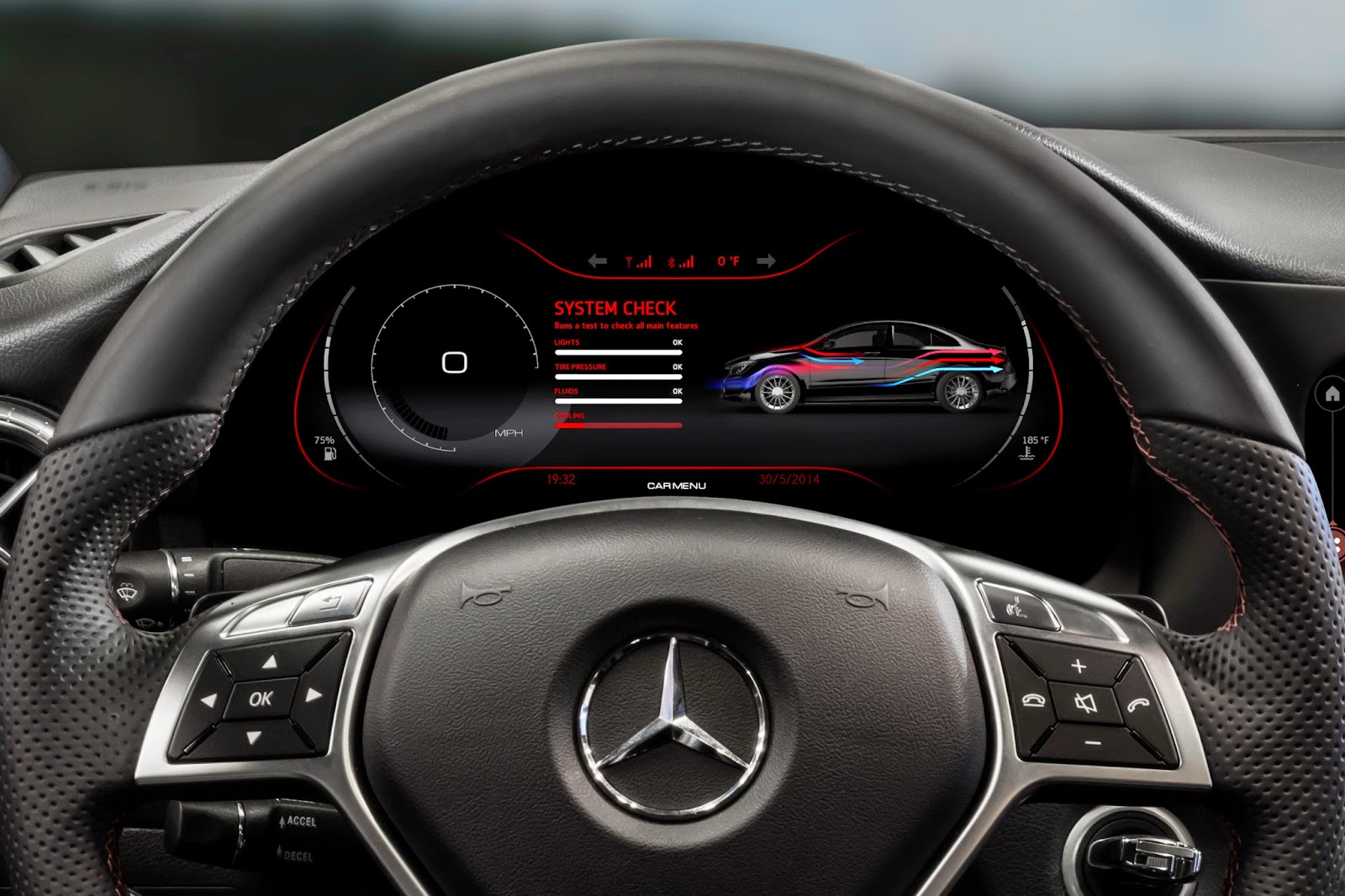Have you ever rummaged through old boxes in your basement and discovered family photos you had totally forgotten about — or never knew existed? I experienced a moment like that a couple of weeks ago. Except, in this case, no basement was involved. And the box wasn't a box, but a shared drive. And the photos weren't of my family, but of cars. QNX technology concept cars, to be exact.
At least once a year, the QNX concept team retrofits a new vehicle to demonstrate how our technology can help auto companies push the envelope in connectivity, infotainment, and acoustics. And, in every case, we take pictures — sometimes, lots of them. Inevitably, we end up choosing a few images for publicity purposes and filing the others. But as I discovered, the images we don't use are often just as good as the ones we do use. We just don't need
all of them!
In any case, stumbling across these photos was great fun. I thought you might enjoy them, too, so here goes...
The PorscheFirst up is the QNX technology concept car based on a
Porsche 911, which made its debut at 2012 CES. We had originally planned to drive the car back to Ottawa once CES was over — but that was before we spoke to our friends at Texas Instruments, who provided the silicon for the car's instrument cluster and infotainment system. They liked the car so much, they asked if we could bring it to their HQ in Dallas, where the following two photos were taken. All I can say is, Dallas is home to at least one awesome cool photographer. Because rather than curse the crazy lighting, the photographer used it to create some playful compositions:
![]()
![]()
If you look below, you'll see another shot of the Porsche, taken just before we shipped it off to CES. The image really doesn't belong in this collection, as it appeared once on a partner website. But it's rare nonetheless, so I decided to include it. And besides, it's cool. Literally.
![]() Did you know?
Did you know? The original Porsche 911, which debuted in the early 60s, was dubbed the 901. Problem was, Peugeot had exclusive rights in France to three-digit car names with a 0 in the middle. And so, the 901 became the 911.
The BentleyNext up is the QNX technology concept car based on a
Bentley Continental GT. In this image, the driver is interacting with the center stack's main control knob, which was mounted directly on a 17" touchscreen. See the row of icons just above the knob? These represented HVAC, music, navigation, hands-free calling and other system functions. The system would automatically display these icons as your hand approached the display; you would then turn the knob to choose the function you wanted. (This image was taken by a BlackBerry employee, whose name I have most ungraciously forgotten.)
![]()
As with our all concept vehicles, the intent was to showcase the technology that we had built into the car's dashboard and center stack. Which probably explains why the following image of the car's exterior was never published. Pity, as it's quite lovely — a classic case of flare adding flair.
![]() Did you know?
Did you know? Those wheels aren't just for show. The Bentley comes equipped with a 616 hp W12 engine (yup, three banks of cylinders) that can do 0-60 mph in a little over 4 seconds — it took me way longer than that to type this sentence.
The JeepNext up is the Jeep Wrangler, which serves as the
QNX reference vehicle. The Jeep plays a different role than the other vehicles highlighted here: instead of demonstrating how QNX technology can help automotive companies innovate, it shows what the
QNX CAR Platform for Infotainment can do right out of the box. In this image, you can see the vehicle's main navigation menu:
![]() Did you know?
Did you know? The original infotainment system in the reference vehicle could post Facebook updates that listed the title and artist of the song currently playing. The system performed this magic in response to
simple voice commands.
The VetteThe QNX technology concept car based on a Chevrolet Corvette made its debut at SAE Convergence 2010. Among other things, it showed how digital instrument clusters can morph on the fly to provide drivers with context-sensitive information, such as turn-by-turn directions. You can see a slicker, more sophisticated approach to reconfigurable clusters in our
most recent technology concept car based on a Mercedes CLA45.
![]() Did you know?
Did you know?We used the Corvette to demonstrate how QNX technology enables automotive companies to create customizable, reskinnable user interfaces. Check out this post on the Corvette's
30-day UI challenge.
The PriusThe first QNX-powered technology concept car was a digitally modded Prius — aka the
LTE Connected Car. The car was a joint project of several companies, including QNX and Alcatel-Lucent, who wanted to demonstrate how 4G/LTE networks could transform the driving experience with a host of new in-vehicle applications.
Here's the car with a very proud-looking Derek Kuhn, who spearheaded the LTE Connected Car project while serving as a VP at Alcatel-Lucent. Derek subequently joined QNX as VP of sales and marketing:
![]() Did you know?
Did you know? When this car was created, telecom companies had yet to light up their first commercial LTE towers. Also, the car had more infotainment systems than any other QNX technology concept car: two in the front (one for the driver and one for the front-seat passenger) and two in the back.
Some things get lost, albeit temporarily. And some you just never see again. Fortunately, all these images belong to the first category. Any favorites?
![]()









































